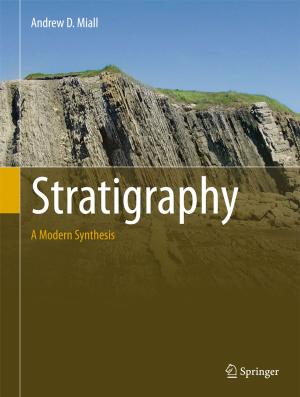Introducing CTS (Copper-Tin-Sulphide) as a Solar Cell by Using Solar Cell Capacitance Simulator (SCAPS)
Nonfiction, Science & Nature, Technology, Electronics, Circuits, Power Resources| Author: | Iraj Sadegh Amiri, Mahdi Ariannejad | ISBN: | 9783030173951 |
| Publisher: | Springer International Publishing | Publication: | May 31, 2019 |
| Imprint: | Springer | Language: | English |
| Author: | Iraj Sadegh Amiri, Mahdi Ariannejad |
| ISBN: | 9783030173951 |
| Publisher: | Springer International Publishing |
| Publication: | May 31, 2019 |
| Imprint: | Springer |
| Language: | English |
This book discusses the enhancement of efficiency in currently used solar cells. The authors have characterized different structures of the solar cell system to optimize system parameters, particularly the performance of the Copper-Tin-Sulphide solar cell using Solar Cell Capacitance Simulator (SCAPS). This research can help scientist to overcome the current limitations and build up new designs of the system with higher efficiency and greater functionality. The authors have investigated the corresponding samples from various viewpoints, including structural (crystallinity, composition and surface morphology), optical (UV–vis–near-IR transmittance/reflectance spectra) and electrical resistivity properties.
- Describes investigations on Cu2SnS3 solar cells and prospective low cost absorber layer of thin film solar cells;
- Discusses the potential device structure of Copper-Tin-Sulphide based on thin film technologies;
- Explains solar cell structure optimization to perform a higher conversion efficiency of Copper-Tin-Sulphide.
This book discusses the enhancement of efficiency in currently used solar cells. The authors have characterized different structures of the solar cell system to optimize system parameters, particularly the performance of the Copper-Tin-Sulphide solar cell using Solar Cell Capacitance Simulator (SCAPS). This research can help scientist to overcome the current limitations and build up new designs of the system with higher efficiency and greater functionality. The authors have investigated the corresponding samples from various viewpoints, including structural (crystallinity, composition and surface morphology), optical (UV–vis–near-IR transmittance/reflectance spectra) and electrical resistivity properties.
- Describes investigations on Cu2SnS3 solar cells and prospective low cost absorber layer of thin film solar cells;
- Discusses the potential device structure of Copper-Tin-Sulphide based on thin film technologies;
- Explains solar cell structure optimization to perform a higher conversion efficiency of Copper-Tin-Sulphide.















